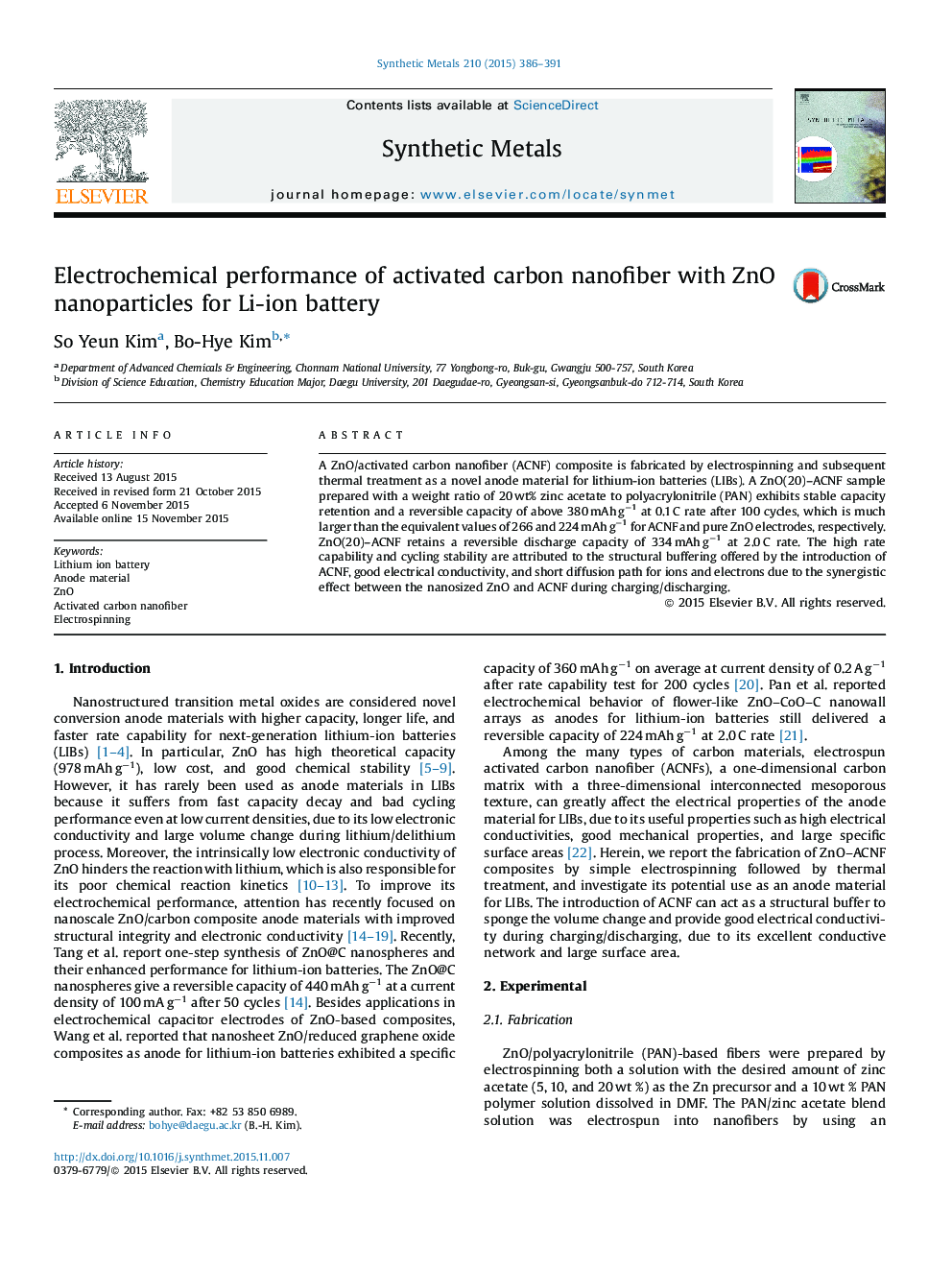| Article ID | Journal | Published Year | Pages | File Type |
|---|---|---|---|---|
| 1440342 | Synthetic Metals | 2015 | 6 Pages |
•Investigation of the electrical properties of ZnO–ACNF as a promising anode material for LIBs.•Development of ZnO–ACNF anodes with high cycling performance and good reversible capacity.•Synergistic effect between nanosized ZnO and ACNF during charging/discharging for high rate capability and cycling stability.
A ZnO/activated carbon nanofiber (ACNF) composite is fabricated by electrospinning and subsequent thermal treatment as a novel anode material for lithium-ion batteries (LIBs). A ZnO(20)–ACNF sample prepared with a weight ratio of 20 wt% zinc acetate to polyacrylonitrile (PAN) exhibits stable capacity retention and a reversible capacity of above 380 mAh g−1 at 0.1 C rate after 100 cycles, which is much larger than the equivalent values of 266 and 224 mAh g−1 for ACNF and pure ZnO electrodes, respectively. ZnO(20)–ACNF retains a reversible discharge capacity of 334 mAh g−1 at 2.0 C rate. The high rate capability and cycling stability are attributed to the structural buffering offered by the introduction of ACNF, good electrical conductivity, and short diffusion path for ions and electrons due to the synergistic effect between the nanosized ZnO and ACNF during charging/discharging.
